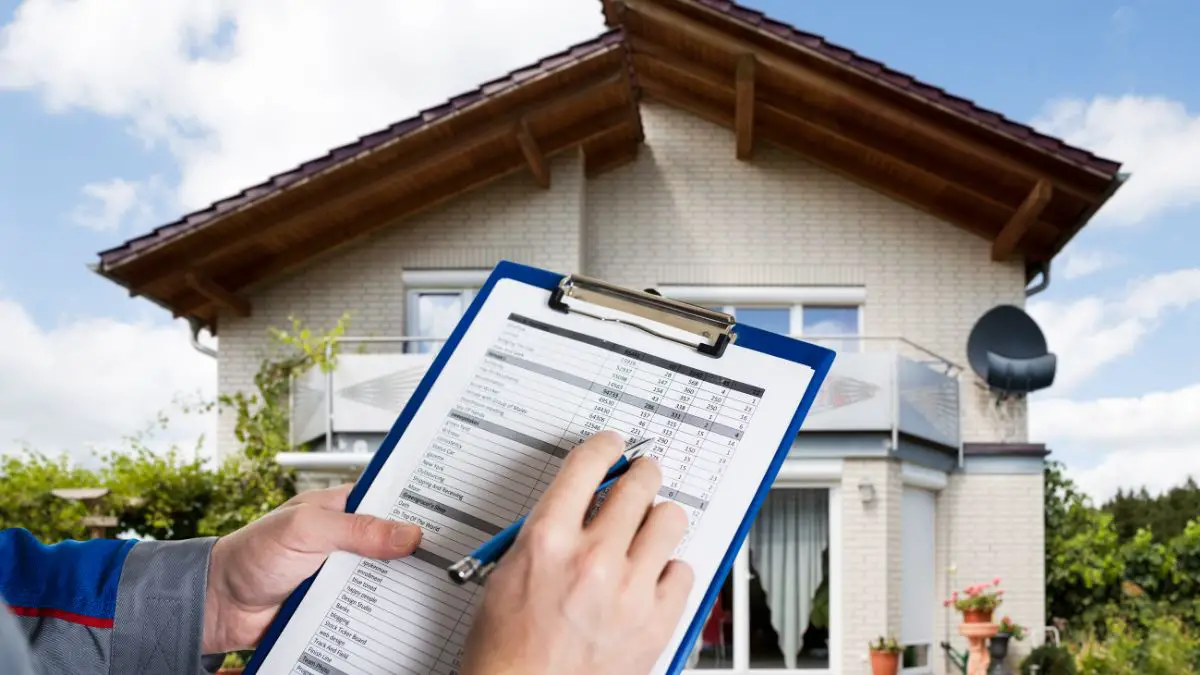A HUD Home Inspection checklist is a comprehensive property assessment to ensure it meets the U.S. Department of Housing and Urban Development’s (HUD) high standards for health and safety.
This inspection safeguards you from investing in a property that could become a financial burden due to hidden structural defects, system failures, or safety hazards.
A HUD home inspection checklist is crucial, especially when considering purchasing a HUD-owned home. It’s like a protective shield, protecting you from potential pitfalls and ensuring your new home is a haven, not a headache.
A successful HUD Inspection signifies the home meets the industry’s highest standards, reassuring buyers. It involves carefully assessing safety, structural integrity, and adherence to HUD’s guidelines, going beyond a superficial examination.

Understanding The HUD Home Inspection Checklist
A HUD Home Inspection Checklist is a vital tool in the HUD Home Inspection process. This checklist is more than just a list; it’s a comprehensive guide to ensure every property meets HUD’s stringent Housing Quality Standards (HQS).
What You Need To Know?
HUD Home Inspections are performed by certified inspectors with expertise in HUD’s Housing Quality Standards (HQS). They thoroughly assess the property, examining its structure, electrical systems, plumbing, and neighborhood.
The HUD Home Inspection Checklist is divided into several key components, each focusing on a different aspect of the property.
4 Key Components To Consider
- Health and Safety Checks: This section ensures the property poses no immediate or potential threat to your health or safety. It includes checks for hazards like lead-based paint, mold, and asbestos.
- Structural Assessment: Here, the inspector examines the property’s structural integrity. They check the foundation, walls, roofs, and other structural elements to ensure they’re sound and stable.
- System Checks: This part of the checklist focuses on the property’s essential systems, including electrical, plumbing, and HVAC. The inspector ensures these systems are functional, safe, and up to code.
- Site and Neighborhood Assessment: This section evaluates the property’s surroundings. It considers noise levels, proximity to amenities, and neighborhood safety.
Understanding how to use the HUD Home Inspection Checklist is crucial. You don’t just skim through it; you use it as a guide throughout the additional inspection process.
As the inspector assesses each aspect of the property, they mark off the corresponding items on the checklist. This systematic approach ensures no detail is overlooked. It’s a valuable resource that gives you a clearer picture of what a HUD-approved home looks like.
Summary
HUD home inspection checklist isn’t just for inspectors. You, as a potential homeowner, can also use it to understand what inspectors are looking for and why certain aspects of the property may pass or fail the inspection.

Detailed Breakdown Of The HUD Home Inspection Checklist
Let’s look at the HUD Home Inspection Checklist and break down its key components. This will give you a clearer understanding of what inspectors look for during a HUD Home Inspection.
Health And Safety Checks
These checks are designed to ensure the property poses no immediate or potential threats to your health or safety. Inspectors meticulously examine the property for hazards like lead-based paint, mold, and asbestos.
Other safety concerns to consider:
- Proper ventilation in areas prone to moisture, like bathrooms and kitchens.
- Safe and secure window frames including weathertight windows and exterior doors.
- Acceptable fire exits and an alternate exit.
- Lack of smoke detectors.
- Absence of severe infestations.
- Absence of safety devices.
- Handicapped unit.
Remember, these checks are not just about ticking boxes. They’re about ensuring your potential home is a safe and healthy environment for you and your family.
Structural Assessment
This part of the HUD home inspection checklist focuses on the rental’s structural integrity. Inspectors check the foundation, walls, roofs, and other structural elements to ensure they’re sound and stable.
They look for signs of:
- Structural damage or deterioration.
- Water damage or major leaks and minor leaks.
- Broken drain stopper
- Condition of foundation
- Proper construction and maintenance.
This thorough assessment ensures the property is structurally sound and won’t present any unexpected and common inspection issues.
System Checks: Electrical, Plumbing, And HVAC
This part of the HUD home inspection report focuses on the property’s essential Electrical, Plumbing, and HVAC systems. Inspectors ensure these systems are functional, safe, and up to code.
They look for:
- Properly installed and functioning electrical systems.
- Safe and efficient plumbing systems.
- Adequate heat source, adequacy of ventilation, and air conditioning (HVAC) systems.
These checks ensure that the property’s essential systems are in good working order and meet HUD’s high standards for safety and efficiency.
Site And Neighborhood Assessment
The Site and Neighborhood Assessment evaluates the property’s surroundings. It considers factors like:
- Noise levels.
- Proximity to amenities.
- Neighborhood safety.
This assessment ensures the property is not only a great home but also situated in a safe and convenient location.
Compliance With Building Codes
Building codes set the minimum standards for construction, ensuring safety and structural integrity. The HUD inspection checklist assesses whether the property meets the applicable building codes.
This evaluation ensures that the building component has been constructed and maintained in accordance with the established regulations, providing occupants with a safe living space.
The HUD inspection checklist aligns with the Housing Quality Standards (HQS) the Department of Housing and Urban Development established.
Regular Inspections And Time Periods
Regular inspections play a crucial role in maintaining property standards. The HUD inspection checklist emphasizes the importance of conducting inspections on a periodic and regular basis.
The recommended time frame or period of time for inspections may vary depending on local regulations and the property’s specific characteristics.
Summary
The HUD Home Inspection Checklist is a complete tool designed to ensure every aspect of property meets HUD’s high standards. From health and safety checks to structural assessments, system checks, and site and neighborhood assessments, this HUD inspection form leaves no stone unturned.

The Role Of HUD In Home Inspections
They are the governing body that sets the standards for home inspections, ensuring every property meets the stringent Housing Quality Standards (HQS).
HUD is responsible for creating and maintaining the HUD Home Inspection Checklist, and comprehensive guide inspectors use to assess a property. This checklist reflects HUD’s commitment to ensuring safe, decent, and sanitary housing for everyone.
7 Roles Of HUD In Home Inspections
- HUD sets the standards for home inspections, ensuring properties meet Housing Quality Standards (HQS).
- HUD creates and maintains the comprehensive HUD Home Inspection Checklist for inspectors to assess properties.
- HUD-approved inspectors meticulously follow the checklist, evaluating every aspect of a property.
- HUD oversees the inspection process, ensuring professionalism, thoroughness, and accuracy.
- HUD ensures compliance with the checklist through checks and balances, requiring issue resolution for approval.
- HUD is a guardian, overseeing inspections for safe, habitable, and sound investments.
- HUD’s involvement guarantees high standards in the housing industry for HUD-approved homes.
Summary
HUD is like a guardian, overseeing the home inspection process to ensure every property is safe, habitable, and a sound investment. They set the standards, provide the tools, and ensure compliance, making them an integral part of the HUD Home Inspection process.
So, when you see a home that has passed a HUD inspection, you can rest assured it has met some of the highest standards in the housing industry.
Comprehensive HUD Home Inspections: Ensuring Safety And Compliance In Rental Units
When managing rental property such as apartment buildings, property owners and property managers must familiarize themselves with the HUD home inspection checklist and its associated inspection requirements.
Appliances Inspection
One significant aspect of the HUD Home Inspection Checklist is the inspection of appliances.
This includes evaluating the functionality and safety of vital devices such as smoke detectors, carbon monoxide detectors, hot water heaters, hot water tanks, electric water heaters, exhaust fans, and ceiling fans.
Water Leakage And Complex Water Heating Systems
Water leakage can lead to significant property damage and pose health risks. The HUD checklist items includes thoroughly examining water supply systems to identify any leakage of water, and ensuring the availability of clean and safe drinking water.
The inspection pays close attention to the presence of water stains and the temperature of running water, ensuring that cold water is readily available.
Any minor defects, such as brownish water or cold water supply problems, are noted and addressed during the inspection process, ensuring the quality and functionality of the water supply system.
Unit Amenities And Accessibility
The HUD Home Inspection Checklist assesses the presence and condition of various unit amenities, including access to units, ensuring that all aspects of the property are evaluated for compliance with safety and quality standards.
This includes evaluating the functionality, air quality, and safety of features like air conditioning units, a built-in heat unit, light fixtures, bathroom wash basins, and broken bathroom fixtures.
Window Conditions And Screen Presence
Windows are vital in maintaining energy efficiency, ventilation, and security. The HUD inspection checklist includes a detailed assessment of window screen conditions.
Inspectors examine elements such as window sills, cracked windows, screens on windows, open-able windows, a crack in window pane, and the presence of screens.
Paint Quality And Deteriorated Paintfir
Paint quality is essential to maintaining a safe and aesthetically pleasing living space. The HUD inspection checklist addresses deteriorated paint surfaces and evaluated painted surfaces’ overall condition.
This inspection helps identify potential health hazards, such as lead-based paint and ensures compliance with housing quality standards.
HQS Inspection And Inspection Manual
The HUD Home Inspection Checklist aligns with the Housing Quality Standards (HQS) the Department of Housing and Urban Development established.
This comprehensive inspection program sets the standards for rental properties participating in HUD programs. Inspectors refer to the Inspection Manual and inspection lists provided by HUD to ensure a thorough assessment of the property’s compliance with HQS requirements.
Summary
Property owners can also benefit from participating in a rental assistance program and inspection program, ensuring their units meet the necessary standards. The initial inspection serves as the foundation for ongoing maintenance and compliance with HUD’s housing inspection guidelines.

HUD In Collaboration With Health And Sanitation Department
In collaboration with the Health and Sanitation Department, the HUD home inspection checklist comprehensively assesses various aspects of the property to ensure compliance with safety hazards and quality standards.
Property Condition And Safety Measures
- Stair condition and Handrails on Stairs
- Adequate Ventilation
- Hot Water Heaters
- Electrical Outlet Cover Plates, Electrical Hazards
- Regular Inspections periodically
- Smoke Detectors and Inspection Requirements
- Carbon Monoxide Detectors
- Floor Coverings
- Tight Seals on Trash Bags
- Heating Systems and Adequate Heat Sources
Health Standards and Sanitation
- Food Preparation and Safe Food Storage
- Accumulation of Garbage
- Garbage Chutes
- Slow Drains
- Major Health Concerns
- Basic Health Standards
Foundation And Fire Safety
- Condition of the Foundation
- Functionality of Smoke Detectors
- Floor Sound
- Prevention of Leaks
- Cooking Stoves
- Microwave Ovens
- Burners on Stoves
Ceiling Conditions
- Ceiling Sound and Broken Ceiling Tiles
- Stains and Ceiling Lamps
- Ceiling Fans
Ensuring Safety And Compliance For HUD-Approved Homes
The HUD Home Inspection Checklist is your roadmap to understanding what a HUD-approved home looks like. By conducting annual inspections, property owners can ensure compliance with safety standards and address any threats to safety promptly.
What You Need To Know?
The checklist provides a framework for verifying the safety of various components within the property, guided by the Property Standards Guide. Inspections are conducted on an individual basis, taking into account the unique characteristics of each property.
Other Factors To Consider
With the support and oversight of the city housing authority, the checklist helps maintain the quality and affordability of rental properties while ensuring the safety and well-being of tenants.
It also helps property owners determine a fair and reasonable rental price based on compliance with HUD standards. The checklist includes thorough evaluations of the drinking water supply to ensure its quality and safety.
It examines for any water stains, checks the availability of cold running water, and addresses any issues related to water leakage, brownish water, or inadequate supply of cold water.
Summary
Through the comprehensive checklist and the verification of safety, the HUD Home Inspection Checklist serves as a valuable resource for both property owners and tenants to create and maintain safe, comfortable, and compliant housing options.

How Do I Contact My Local HUD Office?
You can follow these steps to contact your local HUD (U.S. Department of Housing and Urban Development) office.
- Visit the official HUD website at www.hud.gov.
- Scroll to the bottom of the page and click “Contact HUD” under the “Resources” section.
- You will find various contact options on the “Contact HUD” page. Look for the “Local Offices” section or “Regional Offices.”
- Click the link or button for “Local Offices” or “Regional Offices.” This will direct you to a page to search for your specific local HUD office.
- Enter your city, state, or ZIP code in the search bar or select your state from the provided list.
- The search results will display the contact information for your area’s HUD office(s), including the address, phone number, and email.
- Choose the contact method that is most convenient for you, such as calling the phone number provided or sending an email to the provided email address.
You can obtain information, guidance, and assistance regarding housing programs, regulations, fair housing issues, and more by contacting your local HUD office.
HUD Home Inspection Checklist FAQs
Navigating the world of HUD Home Inspection reports can be daunting, especially when faced with a sea of information. Let’s address some of the most frequently asked questions about the HUD Home Inspection Checklist.
What happens if a property fails the HUD inspection?
It means specific issues must be addressed before the property can be approved. The inspector will provide a report or checklist of items detailing the areas that failed to meet HUD’s Housing Quality Standards.
How often are HUD inspections required?
The frequency of HUD inspection guidelines can vary depending on several factors, including the property type and condition. However, HUD typically requires properties to be inspected at least once a year.
Can a homeowner conduct a self-inspection using the HUD checklist?
While a homeowner can undoubtedly use the HUD Home Inspection Checklist as a guide for maintaining their property, it’s important to note that a self-inspection is not a substitute for a professional HUD inspection.
What does HQS mean?
HQS stands for Housing Quality Standards. It refers to the criteria and standards HUD (U.S. Department of Housing and Urban Development) established to ensure that federally-assisted housing is safe, decent, and sanitary for occupants.
How long does a HUD inspection usually take, including the inspection time?
A typical HUD inspection can vary in duration depending on the size and complexity of the property. On average, the inspection time can range from a few hours to a full day.
Final Thoughts On HUD Home Inspection Checklist
In the homeownership journey, a HUD Home Inspection is a vital step. It’s not just about ticking boxes on a checklist; it’s about ensuring your potential home is safe, habitable, and a sound investment.
Addressing the common reasons for failed inspections is crucial to ensure the safety and compliance of the entire unit, including the residential unit, over a sustained period of time.
By conducting regular housing quality standards inspections and referring to the comprehensive inspection list, you can effectively identify and rectify various types of defects that may hinder compliance with the required standards.







